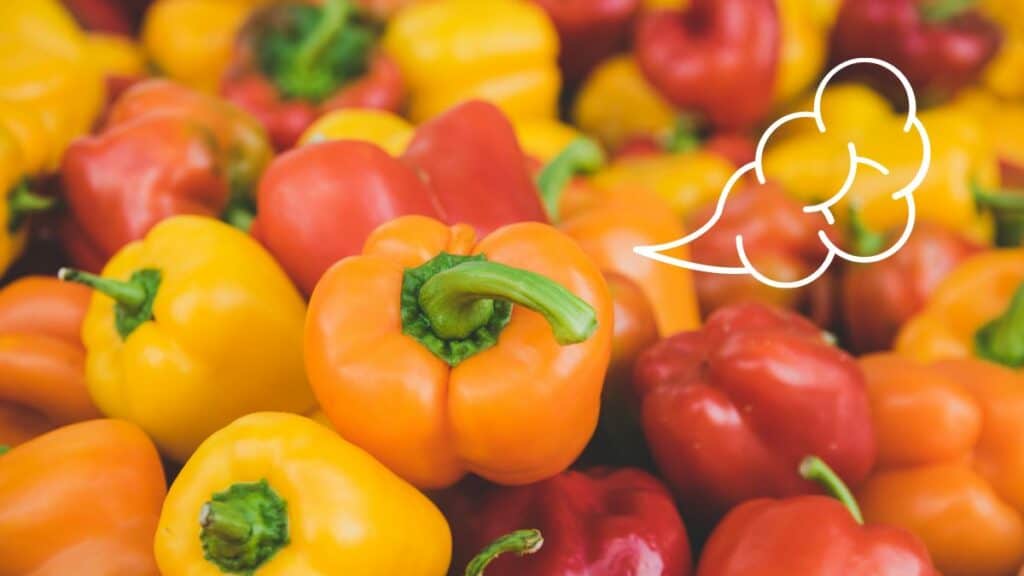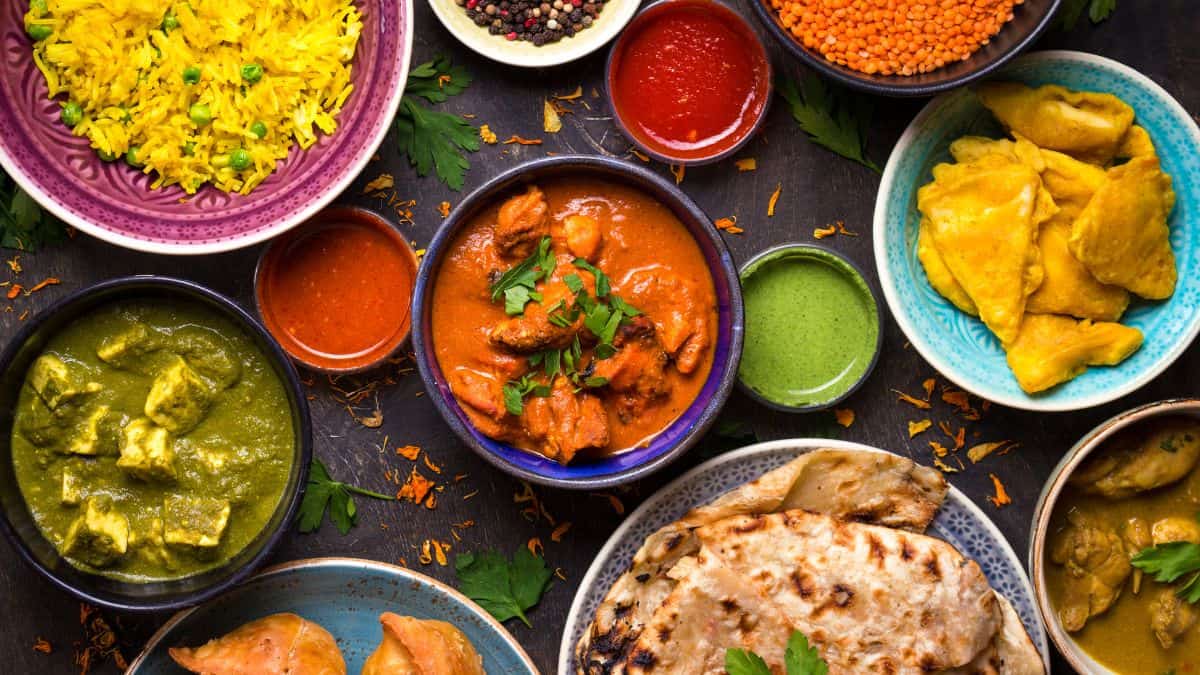For
The good news is yes, you can get your mouth accustomed to spicy food! With gradual exposure and some simple tricks, even the most sensitive palate can adapt.
This guide covers proven techniques to help you learn to love
- Starting with mild ingredients and slowly increasing heat
- Pairing spicy food with cooling ingredients
- Trying cuisines that feature
spice prominently - Adding a touch of spicy flavor to meals
With the right strategy, you’ll be cranking up the heat in no time. Let’s look at the best ways to get your taste buds to enjoy spicy food.
Start Low and Slow with Mild Ingredients

If fiery food makes you sweat, don’t go straight for the ghost peppers. Begin by introducing mild spices and work your way up.
Great starter ingredients include:
- Bell peppers – Add roasted red bells to foods for a hint of flavor.
- Paprika – Adds vibrant color with just a touch of heat.
- Ancho or guajillo chile peppers – Impart a mild, fruity chili taste.
- Ginger – Fresh ginger packs a light spicy kick.
- Siracha – This popular hot sauce has manageable
spice .
As you get comfortable with those milder flavors, increase the intensity gradually. Move on to ingredients like jalapeño, cayenne, and chipotle peppers.
Just be sure to start slow and give your taste buds time to acclimate. It can take weeks or months to build up true
Make Tasty Flavor Combinations
Certain ingredients naturally complement and temper spicy heat. Pairing spicy food with cooling flavors makes them more enjoyable.
Some tasty combinations include:
- Yogurt-based sauces with curries
- Lime juice with Mexican dishes
- Mint with Thai food
- Crunchy vegetables with spicy dips
- Cheese with chilies
The dairy in yogurt or cheese helps soothe the burn. Acidic lime and bright mint balance out heat. Crisp veggies offer a refreshing contrast.
Experiment to find combinations you love! Discover new ways to make spicy food irresistible.
Try Cuisines Known for Spice

Certain culinary traditions from around the world celebrate
- Indian – From vindaloo to curry, Indian cooking has mastered spicy flavors.
- Thai – Thai cuisine mixes sweet and savory with fiery chilies.
- Mexican – Many Mexican dishes get their kick from jalapeños, habaneros or cayenne.
- Sichuan – This Chinese regional specialty features tongue-numbing Sichuan peppercorns.
- Ethiopian – The
spice blend berbere gives Ethiopian stews their heat.
You can start safely by ordering milder dishes at restaurants. Then try making them at home, controlling the
Immerse yourself in the cultures and cuisines that do
Add a Touch of Heat to Familiar Dishes
You don’t have to jump straight to five-alarm chili. Just adding a dash of
Ways to subtly incorporate heat include:
- Sprinkle red pepper flakes onto pizza or pasta.
- Mix a pinch of cayenne into soups or stews.
- Stir some minced pickled jalapeños into mac and cheese or mashed potatoes.
- Drizzle your favorite hot sauce over eggs in the morning.
- Rub a little chili powder onto proteins before grilling.
- Toss raw veggies with a spicy sesame oil dressing.
Let your tastebuds slowly adapt to new flavors. In time, you can keep amping up the heat.
Always Have a Backup Cooling Plan
When trying particularly fiery dishes, be prepared in case it’s too hot to handle. Have cooling ingredients or drinks ready to temper the burn.
Handy ways to tame the flame include:
- Dairy – Drink milk or enjoy spicy food with yogurt sauce or cheese.
- Starch – Bread, rice or potatoes help absorb capsaicin oil.
- Fat – Items like avocado, nuts or coconut milk coat the mouth.
- Acid – Squeeze fresh lemon or lime juice over food.
- Sugar – Sweet ingredients help counter spicy heat.
Stay hydrated with water or soothing tea. Have one of these cooling foods ready just in case.
Take It Slowly and Listen to Your Body
Rushing the spicy food acclimation process usually backfires. Go slowly and pay attention to your body’s signals.
- Wait until you fully recover before trying higher
spice levels. - Drink plenty of fluids when eating fiery dishes to avoid dehydration.
- Note any gastrointestinal discomfort and adjust your diet accordingly.
- Stop eating immediately if you have a bad reaction.
- Carry antacid tablets to neutralize stomach acid when needed.
With patience and moderation, your tolerance will improve. But don’t push past your limits.
Watch Out for Your Digestive System
While your tastebuds may eventually adapt to
Here are some tips for preventing indigestion from spicy food:
- Pay attention to any heartburn, acid reflux, or upset stomach after eating spicy meals.
- Be mindful if spicy food causes bathroom urgency or discomfort.
- Stay well hydrated with water when eating fiery dishes to ease digestion.
- Consider adding gut-friendly fermented foods like kimchi or probiotic yogurt.
- Talk to your doctor if you have chronic GI issues like IBS before adding more
spice .
With care, you can build your
Be Open to New Experiences and Flavors
Learning to enjoy spicy food opens up a whole new world of exciting cuisines and flavors. Approach the process with an open mind and sense of adventure.
- Don’t write off a dish just because it’s outside your comfort zone.
- Try restaurants and cultural foods you’ve never experienced before.
- Read up on spices and regional cooking techniques so you understand what you’re eating.
- View mistakes or setbacks as learning experiences, not failures.
- Focus on all the wonderful flavors, not just the heat.
With an exploratory mindset, this spicy food journey can be fun and educational. Soon you’ll be a genuine
Gradually Increase Your Tolerance Over Time
If at first a little sriracha has you sweating, don’t worry – your
The key is gradually increasing exposure. Here are some examples of how to steadily step up the heat:
- Week 1: Add a pinch of red pepper flakes to a meal once.
- Week 2: Use red pepper flakes twice this week.
- Week 3: Sprinkle on chili powder instead for more heat.
- Week 4: Move up to minced fresh jalapeño in one dish.
- Week 5: Add a spicy salsa to your meals.
- Week 6: Mix in hot sauce or hot chili paste when cooking.
- Week 7: Order a spicy dish at a restaurant.
- Week 8: Cook an authentic curry loaded with spices.
With strategic baby steps, you’ll be surprised at the spicy heights your tolerance can reach!
Persevere Through the Discomfort
Initially, spicy food may make your mouth burn, eyes water, or nose run. Pushing past that discomfort is key to getting used to the sensation.
With repeated exposure, your nerve receptors become less sensitive to capsaicin. Here are some tips for powering through:
- Take small bites and pace yourself instead of gorging.
- Focus on the complex flavors beyond just the heat.
- Keep cooler ingredients handy to temporarily tame the fire if needed.
- Try spicy food at the start of a meal when hunger dulls the burn.
- Remind yourself that the discomfort is temporary and harmless.
- Congratulate yourself for expanding your horizons and abilities.
Over time, your brain can learn to interpret the burn as enjoyable rather than painful.
Use Tricks to Temporarily Tame the Burn
When trying a new ultra-spicy food, have a few tricks ready in your back pocket to temporarily tame the heat if it becomes too much:
- Suck on a sugar cube or lemon drop to coat your mouth. The sugar helps counter the burn.
- Drink a glass of icy cold milk. The cold soothes your mouth while the dairy coats and neutralizes capsaicin.
- Eat a spoonful of plain yogurt, ice cream, or sour cream. The fat and cool temperature coat your tongue.
- Squeeze fresh lemon or lime juice over your food. The acid cuts through the fat that carries
spice . - Pop an over-the-counter antacid tablet like Tums to neutralize stomach acid.
- Breathe through your mouth instead of your nose, which intensifies the burning sensation.
Having a few quick tricks on hand can help you power through extra spicy foods as you build tolerance.
Discover New Ingredients and Flavor Profiles
One of the joys of spicy food is all the amazing flavors and ingredients yet to be discovered.
As your tolerance improves, seek out new spices, sauces, chilies, and dishes.
Experiment with:
- Regional curries and
spice blends from around the world - Exciting chilies like habanero, ghost, or Carolina reaper
- Flavorful oils and hot sauces infused with spices
- Blends like five
spice , jerk seasoning, or harissa - Interesting
spice -centric dishes at ethnic restaurants
The more varieties you try, the more your taste buds will adapt and thrive. It’s a whole new world of flavor out there!
The path to





